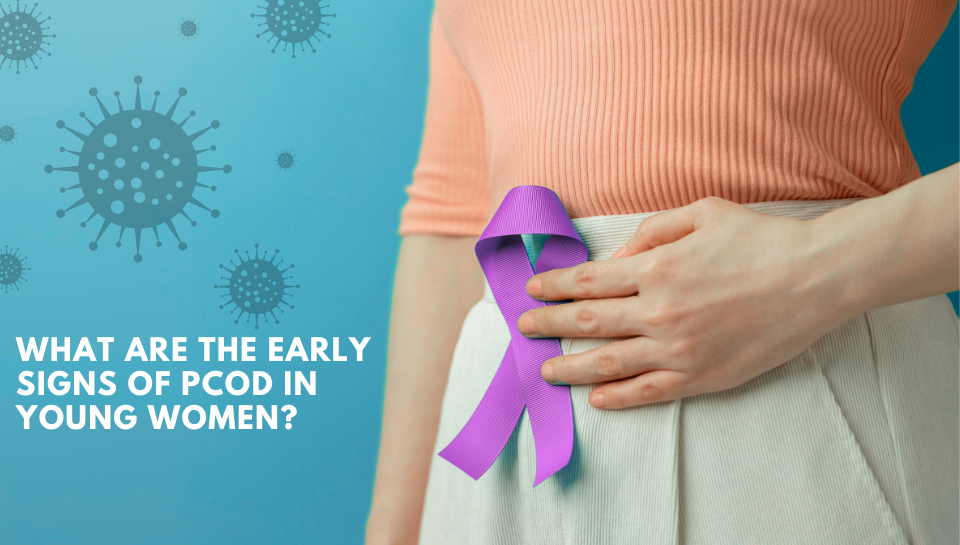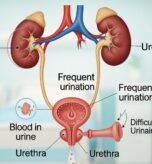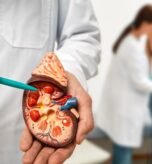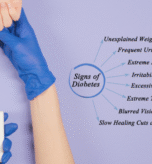What are the early signs of POCD in young women
Polycystic Ovarian Disease (PCOD) is a growing concern among young women today, especially in urban areas where stress, lifestyle habits, and diet play a major role. But the good news is, if detected early, PCOD can be managed effectively. So, what are the early signs of PCOD in young women? Let’s talk about it in a simple, easy-to-understand way.
Understanding PCOD- What Is It?
PCOD is a hormonal condition where a woman’s ovaries produce more than the normal amount of male hormones (androgens). These hormones affect the ovaries’ ability to release eggs regularly. Over time, small cysts can form on the ovaries, which can interfere with periods, fertility, and overall health.
PCOD often starts showing up in the teenage years or early twenties — so it’s important to know the signs early on.
Common Early Signs of PCOD in Young Women
Recognizing PCOD early can help in starting the right treatment and lifestyle changes. Here are the most common early symptoms:
1. Irregular Periods
One of the earliest signs of PCOD is irregular menstrual cycles. This could mean:
- Missing periods frequently
- Having fewer than 8 periods a year
- Periods that are too heavy or too light
Periods that come too close together or very far apart
2. Unwanted Hair Growth (Hirsutism)
Excess hair growth on the face, chest, back, or stomach may occur because of increased levels of male hormones. This is more than just normal body hair — it can be thick, dark, and difficult to manage.

3. Acne and Oily Skin
Hormonal imbalance can trigger stubborn acne, especially on the lower face, chin, and jawline. Unlike teenage acne, this tends to stay longer and may not respond well to regular treatments.
4. Weight Gain or Difficulty Losing Weight
Young women with PCOD often gain weight easily, especially around the belly area. Even with regular exercise and diet control, losing weight may become a challenge.
5. Hair Thinning or Hair Loss
While hair might grow where it’s unwanted, it can also thin on the scalp. Many young women notice hair falling out in clumps or thinning at the crown.
Other Symptoms You Shouldn’t Ignore
In addition to the main symptoms, young women with PCOD might also experience:
- Mood changes: Feeling anxious or depressed
- Fatigue: Low energy levels throughout the day
- Dark patches on the skin: Especially around the neck or underarms (known as acanthosis nigricans)
Why Early Detection Matters
Many young women ignore these signs thinking they’re just part of puberty or regular teenage changes. But the earlier PCOD is detected, the better the chances of preventing long-term complications like:
- Infertility
- Type 2 diabetes
- High blood pressure
- Endometrial (uterine) cancer
At ILSS Hospitals, we encourage early screening and diagnosis so that proper treatment and support can begin as early as possible.
What Should You Do If You Notice the Signs?
If you or someone you know is facing these symptoms, don’t wait. Consult a gynaecologist for a proper check-up. The doctor may suggest:
- Blood tests
- Ultrasound of the ovaries
- Hormonal assessments
Most importantly, PCOD is manageable with the right care. Lifestyle changes, like eating a balanced diet, regular exercise, and stress control, can go a long way in managing the condition.
Conclusion - Listen to Your Body
Understanding the early signs of PCOD in young women is the first step towards taking control of your health. If you’re noticing unusual changes in your period, skin, hair, or weight — it’s time to take them seriously.
At ILSS Hospitals, our expert team is here to support you with diagnosis, treatment, and personalised care plans.





